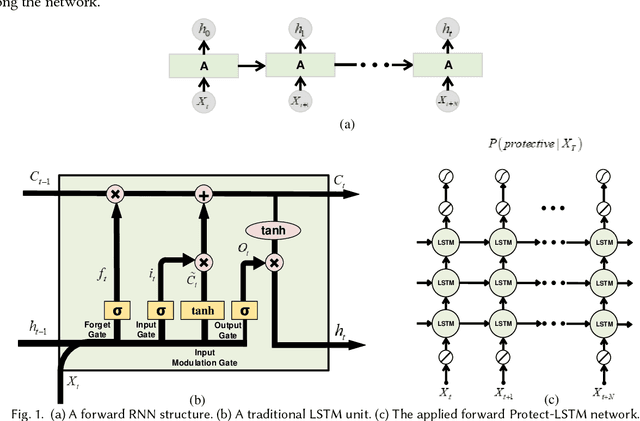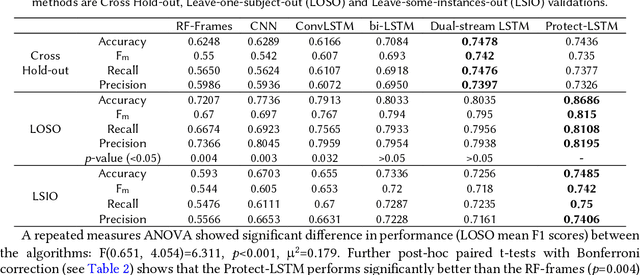Automatic Detection of Protective Behavior in Chronic Pain Physical Rehabilitation: A Recurrent Neural Network Approach
Paper and Code
Feb 24, 2019



In chronic pain physical rehabilitation, physiotherapists adapt movement to current performance of patients especially based on the expression of protective behavior, gradually exposing them to feared but harmless and essential everyday movements. As physical rehabilitation moves outside the clinic, physical rehabilitation technology needs to automatically detect such behaviors so as to provide similar personalized support. In this paper, we investigate the use of a Long Short-Term Memory (LSTM) network, which we call Protect-LSTM, to detect events of protective behavior, based on motion capture and electromyography data of healthy people and people with chronic low back pain engaged in five everyday movements. Differently from previous work on the same dataset, we aim to continuously detect protective behavior within a movement rather than overall estimate the presence of such behavior. The Protect-LSTM reaches best average F1 score of 0.815 with leave-one-subject-out (LOSO) validation, using low level features, better than other algorithms. Performances increase for some movements when modelled separately (mean F1 scores: bending=0.77, standing on one leg=0.81, sit-to-stand=0.72, stand-to-sit=0.83, reaching forward=0.67). These results reach excellent level of agreement with the average ratings of physiotherapists. As such, the results show clear potential for in-home technology supported affect-based personalized physical rehabilitation.
 Add to Chrome
Add to Chrome Add to Firefox
Add to Firefox Add to Edge
Add to Edge